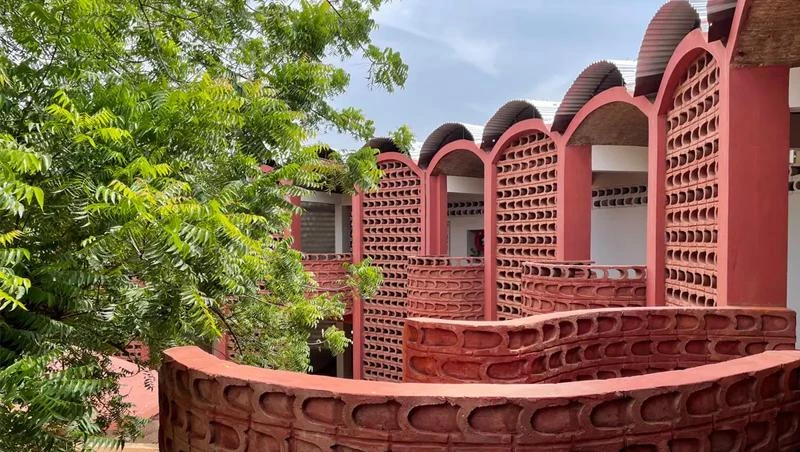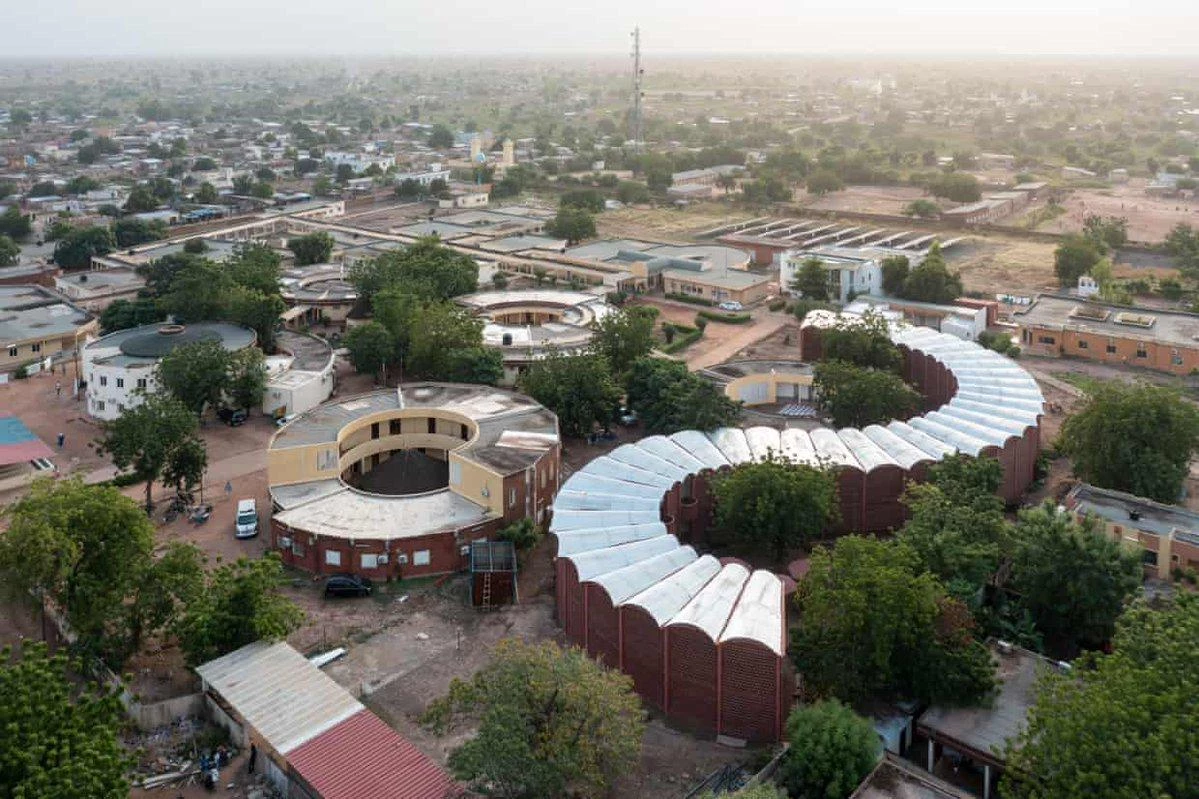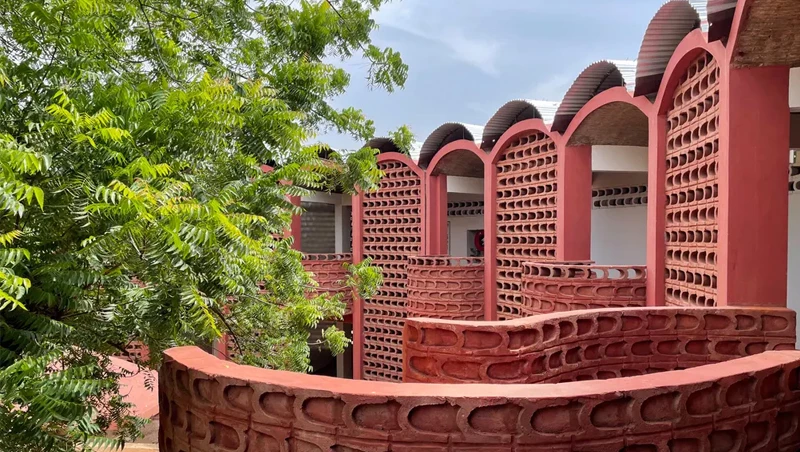Bauhaus in Africa

One hundred years after Anni and Josef Albers met, their work, philosophy and funding clout have made possible a stunning hospital that is saving lives in one of the hottest places on Earth.
When Anni Albers began weaving at the Bauhaus in the 1920s, little did she know that her geometric patterns would one day adorn the doors of a hospital in rural Senegal. Shadows play across the surface of the staggered wooden blocks set into the doors of Tambacounda’s new maternity and paediatric ward, creating a woven effect echoed by the pattern of dappled sunlight streaming in through the perforated brick walls. These are small details, but they go some way to lightening the ordeal of being here, poetic touches that make the clinical environment feel like a place of care.
The art-world-philanthropy-complex works in mysterious ways. One hundred years since Anni and her husband Josef Albers met at the radical Weimar design school, the construction of a new hospital has been enabled, thousands of miles away, by the astonishing sums that their work now sells for, along with the fundraising power their name commands. Located in one of the hottest places on the planet, yet designed to function without air conditioning, the result is a building that aptly embodies the German duo’s philosophy of “minimal means, maximum effect”. And it happened almost by chance...




